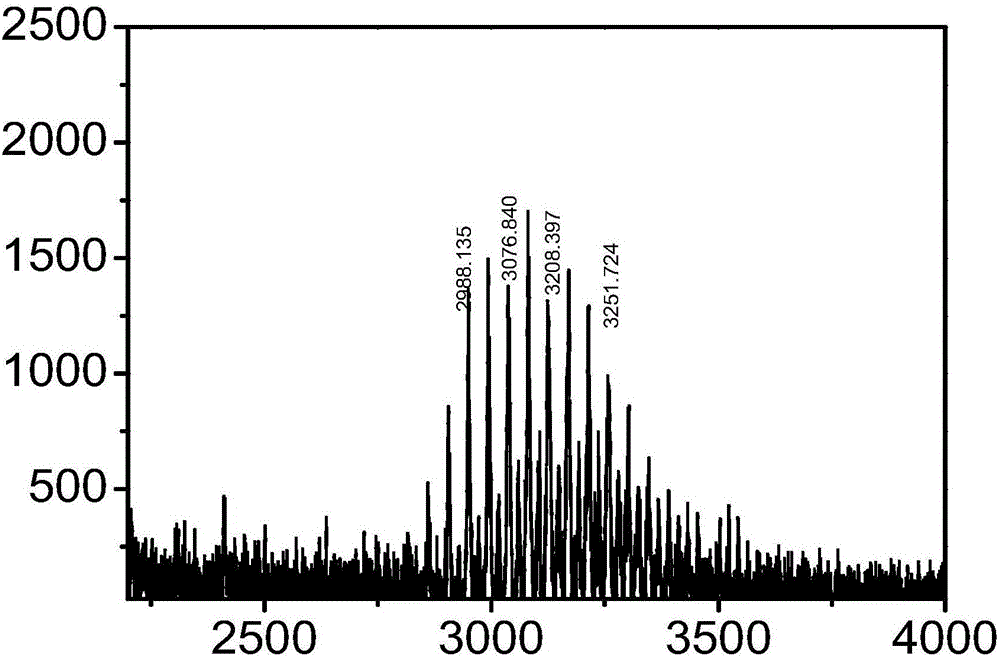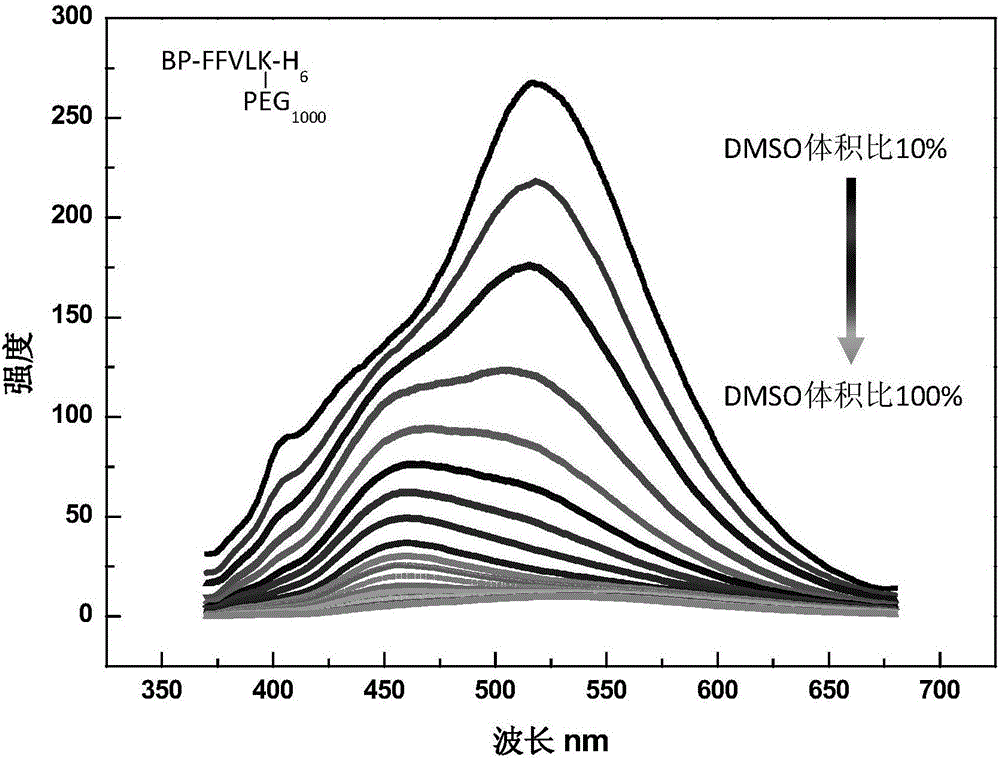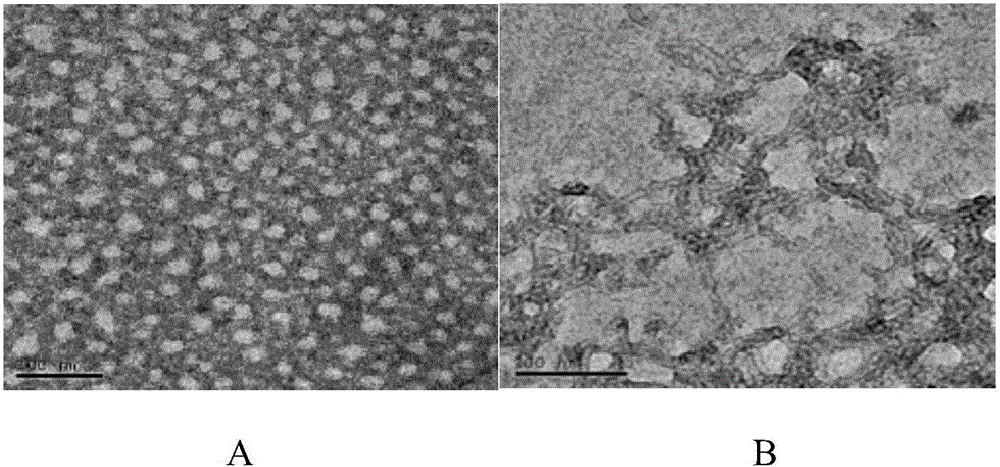Bispyrene-based pH (Potential of Hydrogen)-response self-assembly polypeptide nano material, and preparation method and application thereof
A nanomaterial and self-assembly technology, applied in the field of nanomaterials, can solve problems such as limiting biological applications, achieve wide application prospects, improve utilization rate, and achieve good stability
- Summary
- Abstract
- Description
- Claims
- Application Information
AI Technical Summary
Problems solved by technology
Method used
Image
Examples
Embodiment 1
[0045] In this example, the structure of the bipyrene-based polypeptide nanomaterial is as follows:
[0046]
[0047] That is, in formula II provided by the present invention, R 1 The donor is KLVFF, R 2 The donor is a hexapeptide composed of 6 histidines, R 3 The donor is carboxy-terminated polyethylene glycol with a molecular weight of 1000 g mol -1 .
[0048] The bispyrene-based polypeptide nanomaterials are synthesized by the solid-phase synthesis method of polypeptides, using Wang's resin, according to the sequence of polypeptides, through coupling agents (nitromethylmorpholine: DMF = 5:95, volume ratio) for coupling The PEG and bispyrene compounds with carboxyl groups are also reacted according to the coupling method of amino acids, and finally obtained by cleavage with trifluoroacetic acid, rotary evaporation, and ether purification.
[0049] Mass spectrometry was performed on the bipyrene-based polypeptide nanomaterial synthesized in this example, and the result...
Embodiment 2
[0051] In this example, the bipyrene-based polypeptide nanomaterial prepared in Example 1 was self-assembled, and the pH responsiveness of the material was investigated.
[0052] First, to test the self-assembly ability of the bipyrene-based polypeptide nanomaterials, dissolve the bipyrene-based polypeptide nanomaterials prepared in Example 1 in DMSO, test its fluorescence intensity, and then add water for group assembly. After watering, mix the water and the organic phase thoroughly, and then let it stand for one minute to test its fluorescence intensity. The test results are as follows: figure 2 shown.
[0053] From figure 2 It can be seen that, when adding H to the DMSO solution of bispyrene-based polypeptide nanomaterials 2 The fluorescence increases at O, indicating that the material changes from monodisperse to aggregated.
[0054] The pH-responsive self-assembly method of the bipyrene-based polypeptide nanomaterial is as follows:
[0055] Weigh 5 mg of bispyrene-b...
Embodiment 3
[0058] The bipyrene-based polypeptide nanomaterial prepared in Example 1 was subjected to cell confocal testing to investigate its recruitment to drugs or imaging agents, the method is as follows:
[0059] Prepare cell suspension, 1 mL per confocal dish, and culture overnight. Take out the culture medium, add 1 mL of culture medium with a concentration of 20 μM polypeptide nanomaterials based on bispyrene, overnight; replace the drug with 20 μM Nile Red (Nile Red), incubate for 2 hours, wash with PBS 3 times, and perform confocal imaging experiments. Adopt 405nm laser channel, collect green light band 450-550nm, red light band 550-700nm.
[0060] The result is as Figure 4 As shown, cell spheres were co-incubated with materials and Nile Red, and single-photon confocal experiments showed that when excited at 405nm, when the range of 450-550nm was collected, the green light of bipyrene was displayed; when the range of 550-700nm was collected, it was Ni Luohong's red light, tha...
PUM
 Login to View More
Login to View More Abstract
Description
Claims
Application Information
 Login to View More
Login to View More - R&D
- Intellectual Property
- Life Sciences
- Materials
- Tech Scout
- Unparalleled Data Quality
- Higher Quality Content
- 60% Fewer Hallucinations
Browse by: Latest US Patents, China's latest patents, Technical Efficacy Thesaurus, Application Domain, Technology Topic, Popular Technical Reports.
© 2025 PatSnap. All rights reserved.Legal|Privacy policy|Modern Slavery Act Transparency Statement|Sitemap|About US| Contact US: help@patsnap.com



